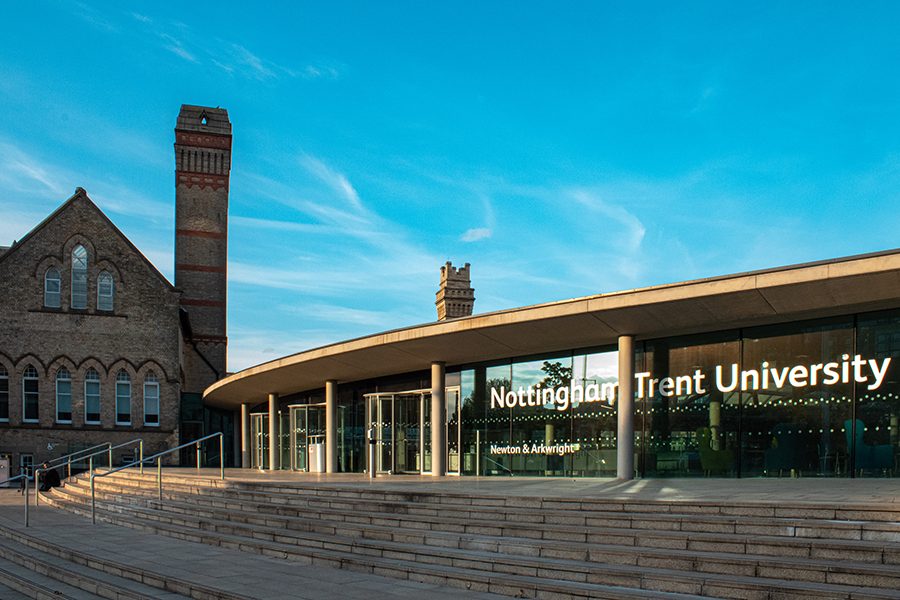Journalism students and staff prove that equality between genders and diversity stays at the core of Nottingham Trent University by taking part in the BBC 50:50 Project.
Eight final year journalism students have monitored the number of female contributors used in their practical work for two weeks, on the CBJ Target website.
The data has been collected by students who volunteered to work in pairs at the end of each news day.
The findings are based on multiple factors that analyse gender bias, looking at the number of women, men and non-binary reporters, interviewees and people pictured.
NTU senior lecturer in journalism and supervisor of the project Jonny Greatrex said: “Being involved in the project and the findings we got were really encouraging.
“It was disappointing our initial gender split was so heavily skewed towards male however perhaps not unsurprising given that is exactly the issue the BBC 50/50 Project looks to address.”
In the first week of monitoring the data, without actively trying to include both genders in journalistic content, the percentage of women contributors across CBJ Target was only of 29 per cent.
“But simply by tracking our data each day and discussing it in conference and as part of commissioning decisions, it led to much more equal figures in the latter stages of newsweeks”, Mr Greatrex added.
“That is encouraging because it appears to show the 50/50 process is one way, we can prepare our students to go into the industry and affect positive change around journalism which better represents our society.”
The BBC 50:50 Project was founded in 2016 by news presenter Ros Atkins, with a goal to achieve equal representation between genders within journalistic content, by monitoring the number of female contributors of a programme.
Mr Greatrex added: “And whatever the figures showed it is important students are having these conversations as part of their industry production days on their course.
“We only tracked gender representations this time however in future versions of the project we hope to add other characteristics such as ethnicity and disability.
“It does add an extra layer of challenge to student journalists who can sometimes find it hard to get people to engage with them, however, that is all good training in terms of thinking about how they approach these issues in the industry.”
50:50 quickly expanded within different content divisions of the BBC, and the methodology of the project was also adopted by other organisations, Nottingham Trent University being one of them.
Amber Malley, a final year Journalism student who helped in the data collection process said: “What shocked me the most was the lack of women in the images and videos – it was something I have never really noticed before but once I was aware of it, it became obvious.”

The low percentages achieved in the first week of the project, showed students how important it is to take into consideration gender representation when producing content.
Alex Mace, one of the Journalism students who took part in the project, recalled: “We worked on the project for two weeks, and when we weren’t making a conscious effort to make the 50 per cent mark, the numbers were quite shocking.”
“Whether it was interviewees, or those who appeared in pictures and videos, it was almost entirely men.”

But, by the end of the second week, the equal representation between genders had considerably improved, with students producing content that featured 47%, 55% and 56% women contributors.
These results have had a major impact on female journalism students, who started to feel more hopeful about choosing a career in this field.
Ashleigh Holland, a Journalism student, said: “It was so positive and exciting to hear projects like these were happening, to try and bring equality to all forms of media.”

“My dream is to become a sports journalist, so I will be a female in a male dominated field.”
But the 50:50 Project has not only been implemented within the Journalism department at Nottingham Trent University; other institutions have also taken part in the project: both at a national and international level, which is encouraging for the project’s team.
Angela Henshall, who is the External Partners Manager of the 50:50 Project said: “I think we are hoping that we are talking to journalism’s future leaders about 50:50 and that they will take 50:50 into the newsroom, in their first job and eventually they’ll be no need for a 50:50 project, it will just be part of the job.”
“I don’t think we can do that until we have new talent coming through that already have made that part of their workflow and that’s what we’re hoping to achieve with the project.”
But she admits that implementation of the 50:50 Project methodology across more than 14 academic institutions, will take more time than expected, especially because of the Covid-19 pandemic: “Trying to get this started in 2020 was quite difficult.”
“Before Covid happened, quite a few universities had expressed interest in doing 50:50, but they had not necessarily got to the point where they would write it into their course.”
“So, it would not necessarily appear on the list of things that they would be tackling for the undergraduates that year – and why – I do not know, I think representation is a big aspect of sourcing so I think it should be there anyway.”
Ms Henshall has revealed that even in challenging times, students have shown a big interest in the 50:50 project.
Most trainee journalists were disheartened when, during placements, discovered that many newsrooms or newspaper are still to implement equal representation in their daily practice.
She added: “I think students are kind of surprised that the system is not in place already in a lot of newspapers and newsrooms, but that’s partly why we want it to work: we want our students to take it with them into their first jobs and use it.”
By Emilia Roman

